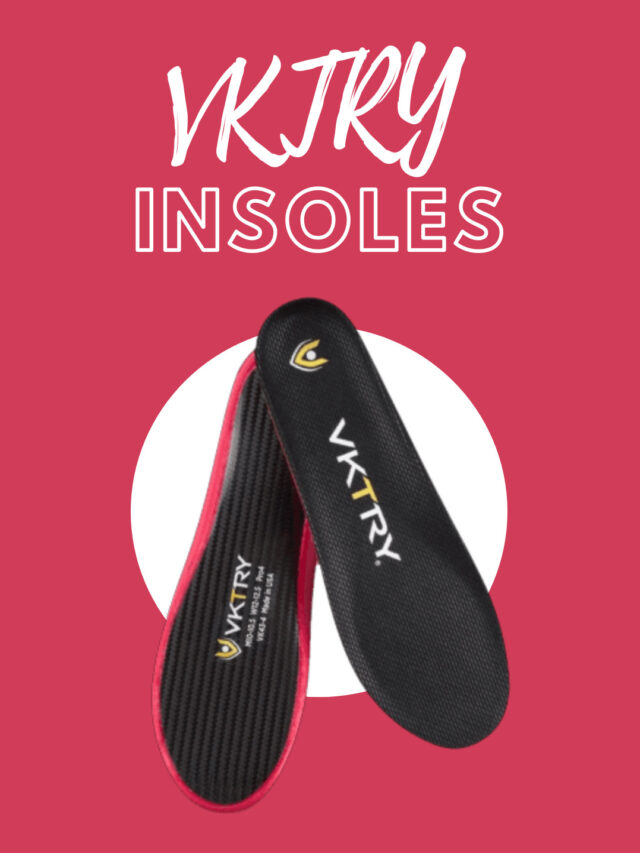Introduction:
The insole innovation represents a significant advancement in athletic performance technology, revolutionising the way athletes train and compete. These innovative insoles have been specifically engineered to optimise foot mechanics, increase support and reduce the risk of injury during physical activity. By leveraging cutting-edge materials and biomechanical principles, performance insoles have emerged as a game-changing tool for athletes who want to push their limits and achieve peak performance. In this article, we’ll delve deeper into the world of insole innovation and explore its profound impact on athletic performance.
How Long Do VKTRY Insoles Last: The Ultimate Guide
Do VKTRY Insoles Actually Work? Unveiling the Truth
Expert Advice: Do New Balance Shoes Run Small, Clearing the Myth?
Performance insoles serve as a secret weapon for athletes seeking to excel by providing vital support, stability and comfort during training and competition. Engineered with advanced materials and biomechanical design, these insoles optimise foot mechanics, reduce fatigue and enhance overall performance. By reducing the risk of injury and maximising efficiency, performance insoles enable athletes to push their limits and reach new heights in their respective sports. Whether running on the track, sprinting on the field, or jumping on the court, these innovative insoles provide champions with the edge they need to excel in their athletic endeavours.
Understanding the Evolution of Performance Insoles:
Tracing the Evolution: A Journey Through the History of Insole Innovation in Sports and Athletics
The history of insole innovation in sports and athletics dates back centuries, evolving from rudimentary foot coverings to sophisticated, performance-enhancing technologies. Ancient civilizations used materials such as straw and animal skins to provide basic protection and comfort to their feet during physical activities.


However, significant advances in insole design did not occur until the 20th century. In the mid-1900s, the introduction of orthotic insoles was intended to address foot conditions and improve comfort for athletes. As sports science progressed, so did insole technology with the development of special materials such as EVA foam, gel inserts and carbon fibre.
These innovations revolutionised the industry, providing athletes with tailored solutions for advanced support, stability and performance. Today, performance insoles are pushing the boundaries with cutting-edge materials, biomechanical engineering and personalised customization, solidifying their role as indispensable tools for athletes striving for excellence in sports and athletics.
Advancements Shaping Modern Performance Insoles
Major advancements in modern performance insoles include the integration of high-performance materials such as carbon fibre and high-density foam, which provide superior support and durability. Biomechanical research has also led to innovative designs that optimise foot mechanics and reduce stress. Additionally, customization options like heat moulding and 3D printing allow for personalised fit and improved performance tailored to individual athletes.
Evolving Footwear Technology: The Transition from Traditional Insoles to Performance-Enhancing Designs
The evolution from traditional insoles to specialised performance-enhancing designs marks a significant shift in athletic footwear technology. Traditional insoles focus primarily on cushioning and basic support, while modern performance insoles are carefully engineered to optimise biomechanics, increase stability, and improve energy transfer. This change reflects the increasing emphasis on precision and functionality, providing athletes with a tailored solution to take their performance to new heights.
The Science Behind Performance Insoles:
Performance insoles take advantage of biomechanical principles to optimise foot functionality during physical activities. They often incorporate materials such as foam, gel, or special polymers to provide cushioning, support, and stability. Some use pressure sensors and microelectronics to analyse gait patterns, providing real-time feedback for improved performance and injury prevention. These technologies aim to improve comfort, reduce fatigue, and enhance overall athletic performance.


These insoles optimise foot mechanics by providing arch support, cushioning and alignment to reduce stress on muscles and joints. They enhance athletic performance by improving stability, balance and shock absorption, allowing athletes to move more efficiently and reduce the risk of injury. Additionally, they can correct biomechanical imbalances, leading to better form and power production during movements.
Carbon fibre provides lightweight yet strong structural support, ideal for applications requiring durability and stiffness, such as aerospace and sports equipment. High-density foam accomplishes this by providing cushioning and impact absorption, increasing comfort and stability in products such as mattresses and orthopaedic devices. Together, they contribute to better support and stability in various industries.
Unleashing Athletic Potential:
- The world’s fastest man, Usain Bolt, credits performance insoles for increased stability and reduced injury risk during his record-breaking sprints.
- NBA star LeBron James relies on performance insoles for better shock absorption and support, helping his agility on the court.
- Serena Williams uses performance insoles to reduce foot discomfort during intense tennis matches, increasing her endurance and agility.


Elite athletes have praised insole innovations for enhancing performance and preventing injuries. Case studies show increased comfort, stability and energy return, leading to improved agility and stamina. Testimonials cite reduced fatigue and increased biomechanics, resulting in better balance and power output during training and competition.
Revolutionary insole designed for optimal performance in all sports. Enhanced stability, shock absorption and energy return give athletes an edge. Whether running, jumping or walking, these insoles optimize biomechanics, reducing fatigue and risk of injury. Raise your game with unparalleled support and comfort, setting new standards in athletic performance.
Overcoming Challenges and Limitations:
Performance insoles are often misunderstood. They don’t just add padding; They optimise biomechanics, reducing the risk of fatigue and injury. Contrary to belief, they are not just for athletes but are beneficial for anyone seeking comfort and support. Quality varies; Custom options address individual needs better than generic options.


Fit, comfort and adaptability pose significant challenges in product design. Ensuring a universal fit for a variety of body types, maintaining comfort during long periods of use, and adapting to the changing needs of users requires careful attention. Factors such as choice of material, ergonomic design and user feedback play an important role in overcoming these barriers.
Manufacturers are tackling the challenges through extensive R&D, focusing on innovations such as automation, AI-powered predictive maintenance and sustainable materials. Advanced robotics streamlines production processes, while predictive analytics optimises resource utilisation. Additionally, R&D efforts are directed toward environmentally-friendly practices, including recycling and renewable energy integration, promoting sustainability in manufacturing.
The Future of Performance Insoles:
Emerging trends in insole technology include personalised 3D-printed insoles for precise fit and support, the incorporation of smart sensors to monitor gait and activity, and the use of advanced materials like graphene for durability and flexibility. Innovations focus on increasing comfort, performance and injury prevention in shoes.


Performance insoles are set to evolve beyond mere comfort assistance, integrating advanced materials and technology to enhance athletic performance, prevent injuries and improve overall wellness. As demand for personalised fitness solutions grows, insoles may expand into everyday footwear, revolutionising comfort and support across a variety of industries.
Conclusion:
The development of performance insoles represents a transformational journey in athletic footwear technology. From ancient foot coverings to cutting-edge biomechanical designs, insoles have advanced significantly, providing athletes with tailored solutions for enhanced support, stability and performance. As innovation in technology continues, the future of performance insoles promises even greater advancements toward optimising athletic ability and improving overall wellness across a variety of industries.


